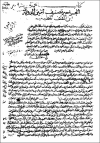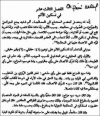Historical essay: An Arabic surgeon, Ibn al Quff's (1232-1286) account on surgical pain relief
- PMID: 25885079
- PMCID: PMC4173333
- DOI: 10.4103/0259-1162.69298
Historical essay: An Arabic surgeon, Ibn al Quff's (1232-1286) account on surgical pain relief
Abstract
This is a review of Ibn al Quff's account of surgical pain relief in his surgical book Al Omdah, in which he mentioned the word anesthetic (Al moukhadder) and the involvement of physician (al tabbaaee) to give mixture of drugs to prevent pain in a surgical condition to relieve the patient from pain or to make surgical management possible. Hich indicated one rare occasion to such description in Arabic medical texts. Methods of administration of these drugs were inhalation, ingestion and by rectal suppositories. The drugs used in anesthetic sponges include all the drugs that are recorded in the modern literature of anesthesia. They are as follows: opium, mandrake, Hyocymus albus, belladonna, Cannabis sativus, Cannabis indica, wild lettuce. The anesthetic sponge, mentioned in many references as an inhalation method, may be of symbolic value to surgery.
Keywords: Anesthetic sponge; Arabian anesthesia; Ibn El Quff; Ibn al Koff; Ibn al Kuff; Ibn al Quff; Medieval Medicine; Natural Syria; Pain relief; health preservation Surgery.
Conflict of interest statement
Figures




References
-
- Tallmadge GK. Some anesthetics of antiquity. J Hist Med Allied Sci. 1946;1:515–20. - PubMed
-
- Hamilton GR, Baskett TF. In the arms of Morpheus: The development of morphine for postoperative pain elief. Canadian Journal of Anesthesia. 2000;47:367–74. - PubMed
-
- Haddad FS. History is our pride (Editorial) Middle East J Anaesthesiol. 1971;3:3–4.
-
- Baraka A. Historical aspect of opium. Middle East J Anaesthesiol. 1982;6:289–302. - PubMed
-
- Baraka A (Arabic) Opium. Anaesth Essays Res. 1985;1:7–20.
Publication types
LinkOut - more resources
Full Text Sources
